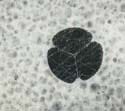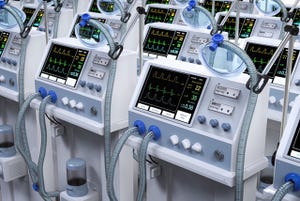Plated Radiopaque Wires Increase Functionality
January 1, 2003
Originally Published MPMNJanuary/February 2003
HOTLINE
Plated Radiopaque Wires Increase Functionality
Compared with welded units, the components offer greater flexibility and decreased profiles
|
This cross section of an LCX wire from Scilogy Corp. shows the benefits of plating nitinol and stainless-steel wires. |
Replacing welded units, plated radiopaque wires from Scilogy Corp. (Miami) can increase functionality in a variety
of medical applications. "Traditionally, radiopaque wire devices have been constructed by soldering a radiopaque and a nonradiopaque wire segment together end to end, but this results in a stiff joint that lacks flexibility and that can bend during use," explains president Frank Vellined. "Our LCX wires eliminate these problems because they consist of a nitinol or stainless-steel coil that is plated with, rather than welded to, gold or platinum for radiopacity," he says.
According to Vellined, this plated design also translates into cost savings for device manufacturers, as it requires less of the expensive radiopaque materials than welded models. "The LCX wires offer the same level of radiopacity as precious-metal wires, but at half the cost," he says. Other product benefits are said to include higher conductivity, greater flex life, and decreased device profiles.
LCX wires are supplied in diameters ranging from 0.001 to 0.062 in. and in lengths up to 80 in. Shipped in coils, the wires can be customized to produce different levels of stiffness and radiopacity. Multifilar, tapered, close-wound, and variable-pitch configurations are available. Product applicationsspan guidewires, high-conductivity leads, stents, aneurysm coils, springs, catheter wires, and flexible endoscope shafts.
Scilogy Corp., 4608 SW 74 Ave., Miami, FL 33155; phone: +1 305 269 0500; fax:+1 305 269 0501
Copyright ©2003 Medical Product Manufacturing News
You May Also Like



